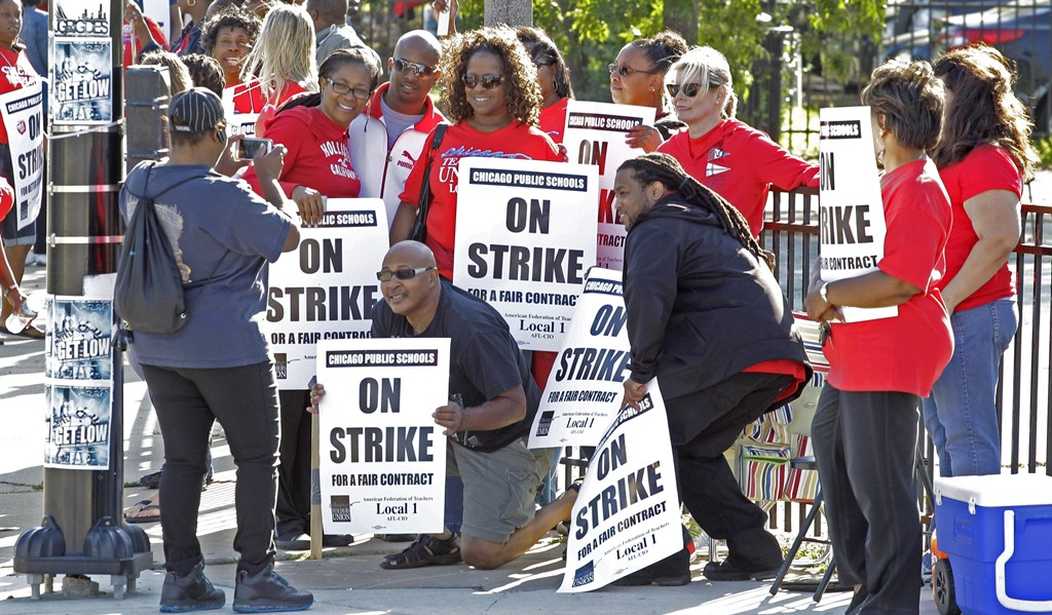A solid column from George Will today arguing a point that can never be mentioned enough: Public sector unions are a menace. He opens with an object lesson in why this is so involving public schools.
In 2019, Success Academy Harlem 2 charter school ranked 37th among New York state’s 2,413 public elementary schools, one of which, PS 30, had only about a third as many pupils as Harlem 2, spent twice as much per pupil and ranked 1,694th. PS 30 and Harlem 2 operate in the same building.
The contract for PS 30’s unionized teachers is 167 pages long, mostly detailing job protections, and what teachers can and cannot be required to do. The contract for Harlem 2’s nonunion teachers is one page long. Those teachers can be fired at will, and are paid 5 to 10 percent more than PS 30 teachers on the other side of the building.
The obvious problems with public sector unions have been pointed out many times. To put it succinctly, unions are meant to give workers a more even hand in tough negotiations with management. But in the public sector there’s not much incentive for management to drive a hard bargain. After all, its not their money being spent, it’s the taxpayers’ money.
This also leads to a cozy and often circular relationship at the local level, i.e. unions fund the election of local officials who are already predisposed to give the unions what they want including generous contract that ensure almost no one is ever fired.
A 2011 book reported that over an 18-year period, just about two of Illinois’ 95,000 teachers were dismissed annually for unsatisfactory work. Because California’s 300,000 teachers are unionized, Howard says, two or three a year are terminated for performing poorly. Consider this from a pro-union blog: “We don’t need to swap out all the bad and mediocre teachers for better teachers, any more than we should swap out our struggling students for more advanced students.”
I’ve written many times about the horrid school system in Baltimore. There’s plenty of evidence that teaches and administrators were actively engaged in fraud, enrolling ghost students in ghost classes in order to be able to claim millions in public money for educating them. Has anyone been fired for this? You can probably guess why not.
None of this would fly in the private sector because there would be people in charge who made sure bad apples and dead weight were not a drag on the company (That or the company would soon fail). But I can tell you as someone who worked for the federal government for 11 years, it is very difficult for a manager in a government office to fire someone who doesn’t do their job. And it’s not just the low level employees who get a pass. I’ve seen plenty of upper level employees who took long lunches and read the newspaper at their desk every morning with no fear it would impact their livelihood.
As Will points out, it’s not just teachers who are immune to consequences thanks to union insulation. How much ink has been spilled in the last couple years about the need for police reform? How many reformers have noted that one reason bad cops don’t get fired is that their unions make sure it’s very difficult to remove them.
Of the approximately 2,600 complaints the Minneapolis Police Department received in the decade before the murder of George Floyd, 12 led to discipline, the most severe being a 40-hour suspension. In 2017, a Post report on 37 large cities’ policing found a dismissal rate of 130 officers a year out of 91,000.
It’s hard to get rid of the bad apples when you can only fire 0.1% of the total staff per year. I’m not an anti-police activist by any stretch but even I think it’s likely the number of bad cops is a lot higher than 0.1 percent. Even if it’s only 2%, it will take 20 years to get rid of them.
Finally, I came across this story today with some good news. The membership in California teachers unions is down over the past five years. The membership peaked at 326,000 back in 2018:
At the beginning of March 2020, the union had 304,509 members. Internal documents show that figure dropped to 293,444 as of Jan. 13, 2023, a loss of 11,065 members.
Comprehensive numbers for the union’s 995 local affiliates are of less recent vintage, but official as of Aug. 31, 2022…
Losses appear to be indiscriminate across all local sizes. Eight of the state union’s 10 largest locals lost members between 2019 and 2022, while overall, 587 locals lost members during that period…
The health of the California Teachers Association and other large state affiliates is critical to the overall health of the National Education Association. Their membership dues help subsidize the continued existence of sickly state affiliates in the South. If California losses continue, it will have a domino effect across the country.
What a shame it would be if these public sector unions weren’t there to prop up bad teachers, shutter schools to harm kids’ educations and support Democratic candidates.









Join the conversation as a VIP Member